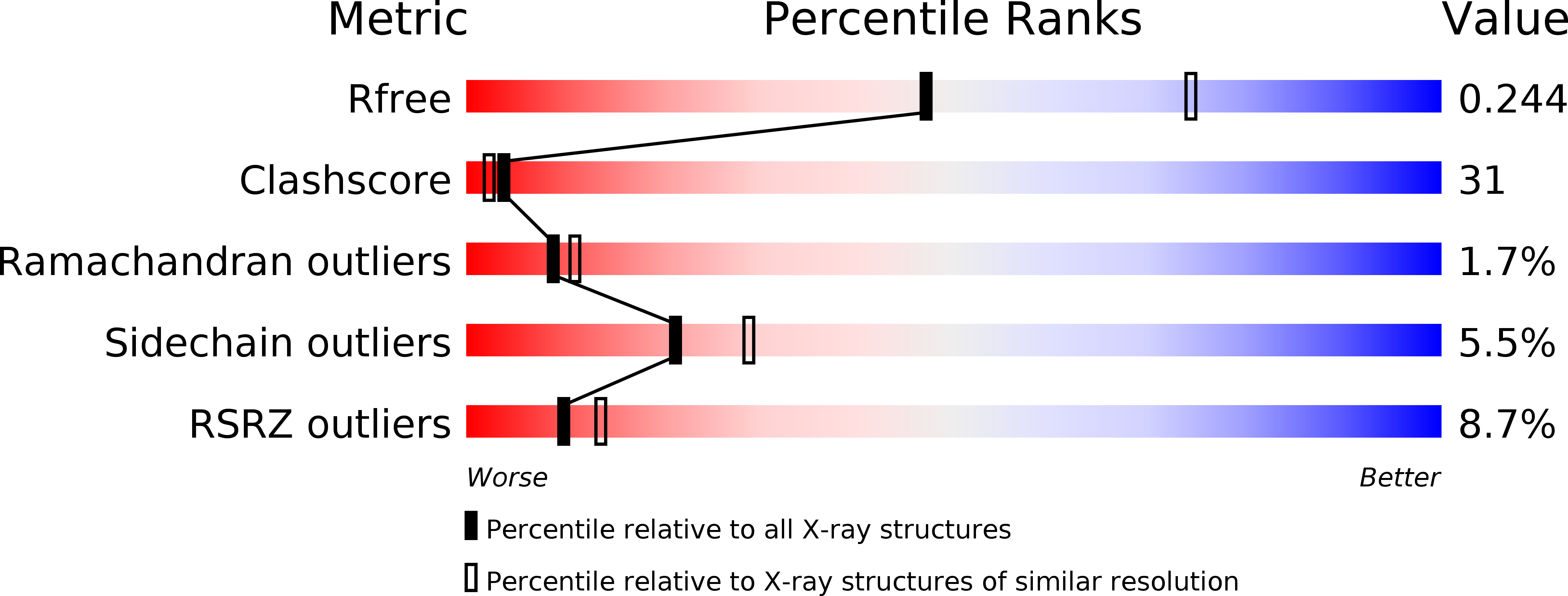Structure of {lambda} CII: Implications for recognition of direct-repeat DNA by an unusual tetrameric organization
Datta, A.B., Panjikar, S., Weiss, M.S., Chakrabarti, P., Parrack, P.(2005) Proc Natl Acad Sci U S A 102: 11242-11247
- PubMed: 16061804
- DOI: https://doi.org/10.1073/pnas.0504535102
- Primary Citation of Related Structures:
1XWR - PubMed Abstract:
The temperate coliphage lambda, after infecting its host bacterium Escherichia coli, can develop either along the lytic or the lysogenic pathway. Crucial to the lysis/lysogeny decision is the homotetrameric transcription-activator protein CII (4 x 11 kDa) of the phage that binds to a unique direct-repeat sequence T-T-G-C-N6-T-T-G-C at each of the three phage promoters it activates: p(E), p(I), and p(aQ). Several regions of CII have been identified for its various functions (DNA binding, oligomerization, and susceptibility to host protease), but the crystal structure of the protein long remained elusive. Here, we present the three-dimensional structure of CII at 2.6-angstroms resolution. The CII monomer is comprised of four alpha helices and a disordered C terminus. The first three helices (alpha1-alpha3) form a compact domain, whereas the fourth helix (alpha4) protrudes in different orientations in each subunit. A four-helix bundle, formed by alpha4 from each subunit, holds the tetramer. The quaternary structure can be described as a dimer of dimers, but the tetramer does not exhibit a closed symmetry. This unusual quaternary arrangement allows the placement of the helix-turn-helix motifs of two of the four CII subunits for interaction with successive major grooves of B-DNA, from one face of DNA. This structure provides a simple explanation for how a homotetrameric protein may recognize a direct-repeat DNA sequence rather than the inverted-repeat sequences of most prokaryotic activators.
Organizational Affiliation:
Department of Biochemistry, Bose Institute, P1/12 CIT Scheme VIIM, Calcutta 700 054, India.















